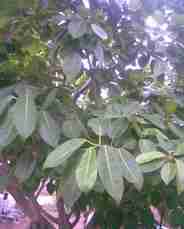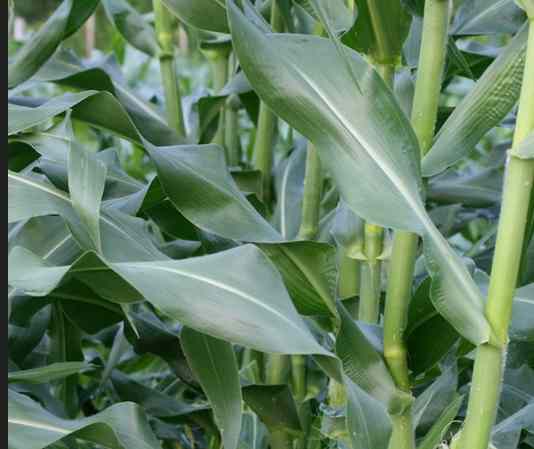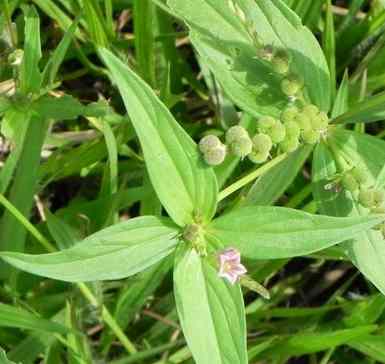
support@yorubalibrary.com
+2348073529208, 07038599574

When elderly people of Yoruba land want to caution a pompous person, they will say a proverb that "Ewe Odan se ju bee lo, eran lo fi je" (Odan leaf did more than that, it was eventually eaten by goat). This shows how domesticated and appealing this leaf is. Aside this, it has many great medicinal properties which we'll be discussing below.
Yoruba traditional medicine is a living system built on generations of close observation and use of plants to heal the body and restore spiritual balance. One such medicinal tree is the Odón leaf (also spelled Odan), known scientifically as Ficus thonningii. This plant, often referred to as the wild fig or strangler fig in English. It is commonly found around farms, forests, shrines, and village compounds across Yoruba land.
The Odón tree is widely known for its milky sap, large oval leaves, and the spiritual aura it carries. It is used in herbal preparations for both physical and metaphysical healing. The leaves, bark, latex, and roots all serve medicinal purposes. Traditional healers regard the Odón tree as sacred, often planted near shrines, homes or used in rituals associated with healing, protection, and fertility.
Key Facts
Category: Leaf
Botanical Name: Ficus thonningii
Common Name: Strangler Fig / Wild Fig
Yoruba name: Ewe Odon or Ewe Odan
Igbo Name: Nil
Hausa Name: Nil
Characteristics of Odón Leaf
• Growth Habit:
A fast-growing evergreen tree with an expansive canopy.
• Leaves:
Broad, leathery, and dark green with a glossy finish.
• Fruits:
Produces small fig-like fruits that are usually not consumed by humans but eaten by birds and animals.
• Sap:
Contains a thick, milky latex with strong medicinal and adhesive properties.
• Habitat:
Found across savannahs, forest edges, and farmland in tropical Africa.
Traditional Uses in Yoruba Medicine
1. Wound Healing and Skin Treatment
The latex or crushed leaves are applied to wounds, boils, and skin infections. The plant promotes rapid healing and prevents infection due to its antimicrobial nature.
2. Spiritual Cleansing and Protection
Odón leaf is frequently used in herbal baths and omi-ero to cleanse spiritual pollution and shield individuals from negative forces. It is particularly associated with Ifa and Orisa worship.
3. Fertility and Female Reproductive Health
Decoctions of the leaf are used by women to treat delayed menstruation, cleanse the womb, and support fertility.
4. Anti-inflammatory and Pain Relief
The bark and leaves are used in infusions to relieve body pain, swellings, and muscular discomfort.
5. Toothache and Oral Conditions
The sap is applied directly to aching teeth or gum infections, offering natural pain relief and antiseptic action.
Want to treat common ailments such as Malaria, Cough, Measles, Typhoid, Pile etc naturally without spending much? Grab a copy of Authentic Herbal Solutions: 15 Common Ailments & Their Natural Cures. A practical eBook recommended for everyone regardless of tribe, religion or association. Order below or Download sample here
AUTHENTIC HERBAL SOLUTION #4KOne Yoruba proverb says "Bí olóde ò kú, òde rè kì í wu Gbégi". Do you know that Gbégi is actually a leaf/plant? Get Yoruba Proverbs on Plants and Herbs, which is a collection of Untold Wisdoms Hidden in Leaf and plants comprising their Life Applications & Moral Teachings. Order below or download sample here
YORUBA PROVERBS ON PLANTS #4KHealing Properties of Odón Leaf
• Anti-microbial: Fights infections on the skin and within the body.
• Anti-inflammatory: Reduces swelling and relieves aches.
• Astringent: Contracts tissues and helps dry out wounds or boils.
• Fertility Support: Promotes reproductive health and hormonal balance in women.
• Spiritual Purifier: Removes negative energy and restores emotional and spiritual equilibrium.
Functions in Yoruba Traditional Medicine
• Used in sacrificial rituals and purification ceremonies.
• Forms part of healing rituals by Babalawo or Oloorisa for spiritual afflictions.
• Included in herbal treatments for children suffering from persistent sickness.
• Used in combination with other herbs in protective charms and amulets.
• Applied as poultice for abscesses, bruises, and insect bites.
Conclusion
Odón (Ficus thonningii) is a sacred and medicinal tree in Yoruba traditional practices. From physical healing to spiritual purification, the uses of its leaf, sap, are essential to Yoruba people and their health.
Have you heard of our Yoruba Herb Dictionary? This contains names of Yoruba Leaf, Roots, Barks, Characteristics, Properties & Identification with HD Pictures. Order below or download sample here
A-Z HERBS & LEAF DICTIONARY #4K
Know more about the Yoruba traditional uses and he…

Learn about Ewe Aran, a potent Yoruba medicinal le…